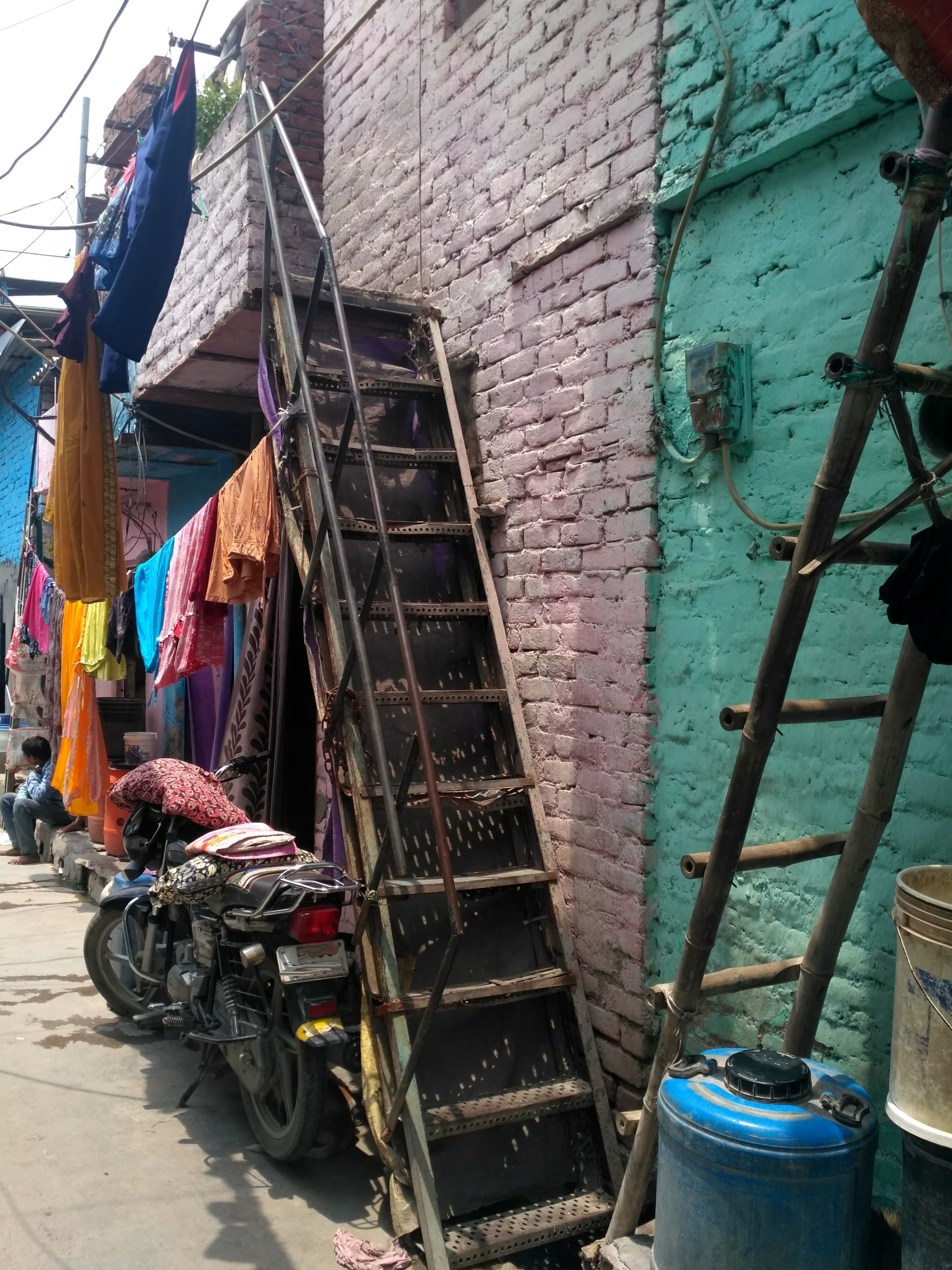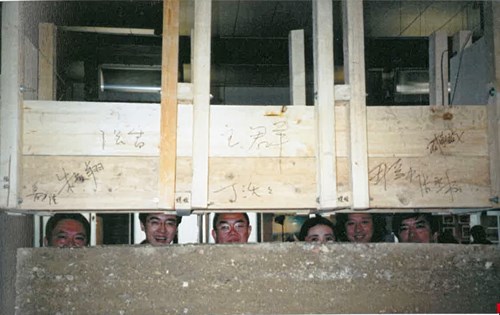PAST TALKS 2022
20 September 2022
Urban ‘Re’-Development and the Unfulfilled Promise of Formal Housing:
NAOMI HAZARIKA
University of Colorado at Boulder
Respondent: Saeed Ahmad, Georg-August-Universität Göttingen
![]()
Houses in an informal settlement near Okhla Industrial Area, New Delhi, India
What happens when the houses built as part of ‘slum redevelopment’ act as infrastructure that exacerbates the urban inequality built into the rapid urbanization process of the global south? In this paper, and as part of my doctoral research, I look at a recent slum redevelopment policy
introduced by the Government of India and adopted by the city of New Delhi that allows private developers to build high rises for slum dwellers in order to clear up slum lands in exchange for remunerative components. Building on Lancione’s (2020) theory of ‘dwelling as difference’ bu in the context of postcolonial urbanism, this paper argues that housing struggles in the context of slum redevelopment in cities of the global south need to be understood as instances of everyday lived and embodied contestation of the given habitus for the most vulnerable urban population-the urban poor. These lived experiences of negotiations, contestations and struggles in the backdrop of the desire for and the right to formal housing offer an understanding of how postcolonial urbanization as a process creates and exacerbates existing socio-economic inequalities on the lines of caste and class in cities of the global south. Moreover this paper brings together feminist scholarship on one hand and anti-caste scholarship in the context of India on the other, that have highlighted the importance of studying the body as a site of politics, to push the concept of infrastructure further into the sphere and scale of the body, desires and aspirations. Findings reveal the importance of studying slum redevelopment housing as a type of infrastructure that goes beyond its architectural materiality and in turn becomes the very vector through which urban vulnerabilities are shaped. This paper draws from 4 years of fieldwork conducted in informal settlements of New Delhi, India and specifically highlights insights from a pilot study conducted in two settlements slated for redevelopment in the city.
***
Dissenters Unfettered:
DIJIA CHEN
University of Virginia
Respondent: Liyang Ding, Marywood University
![]()
Chinese architects at the opening ceremony of exhibition "TUMU: Young Architects of China",
Aedes Architecture Forum, Berlin, 2001. Aedes Architecture Forum.
This talk critically interrogates the widely-acknowledged concept of “contemporary Chinese architecture”, not as a faithful reflection of the architectural production in China per se, but rather as a discursive construct privileging a small group of independent architects primarily established through overseas exhibitions in the early-twenty-first century, centering on their debut in Germany, “TUMU: Young Architecture of China”. Despite the vast and diverse practices happening in China, the notion “contemporary Chinese architecture” commonly refers to the small-to-medium-scale projects designed by individual studios while excluding the majority of architectural production. In fact, the designer group representing “contemporary Chinese architecture” was preceded by the “experimental architecture”, an originally peripheral, heterodoxic movement marginalized by the state-regulated architectural production system in socialist China which comprised a hardly-noticeable part in the overall architectural production in China throughout the ‘90s. It wasn’t until the 2001 exhibition “TUMU: Young Architecture of China” that these architects started to be recognized both at home and abroad. The unexpected yet sensational success of “TUMU” marked a pivotal moment in the recent Chinese architectural history, which instigated both the breakout of independent architects in the domestic design market and the gradual consolidation of the image of contemporary Chinese architecture in world discourse. In this talk, I frame temporary exhibitions as “contact zones”, or sites of cross-border contestation and negotiation within a fixed time and space, to study the transcultural imaginaries, institutional encounters and mediatized communications that shape professional and scholarly views of self/other. I study how concepts, narratives, and ideas travel in and out of the exhibitionary contact zone implemented by “TUMU” under the fast-changing cultural-political context at the turn of the century, and how their interpretation and misinterpretation directly or obliquely shaped the image and reality of contemporary Chinese architecture as we know today.
Urban ‘Re’-Development and the Unfulfilled Promise of Formal Housing:
Embodied Infrastructural Realities
of Slum Redevelopment in Delhi, India
NAOMI HAZARIKA
University of Colorado at Boulder
Respondent: Saeed Ahmad, Georg-August-Universität Göttingen

Houses in an informal settlement near Okhla Industrial Area, New Delhi, India
What happens when the houses built as part of ‘slum redevelopment’ act as infrastructure that exacerbates the urban inequality built into the rapid urbanization process of the global south? In this paper, and as part of my doctoral research, I look at a recent slum redevelopment policy
introduced by the Government of India and adopted by the city of New Delhi that allows private developers to build high rises for slum dwellers in order to clear up slum lands in exchange for remunerative components. Building on Lancione’s (2020) theory of ‘dwelling as difference’ bu in the context of postcolonial urbanism, this paper argues that housing struggles in the context of slum redevelopment in cities of the global south need to be understood as instances of everyday lived and embodied contestation of the given habitus for the most vulnerable urban population-the urban poor. These lived experiences of negotiations, contestations and struggles in the backdrop of the desire for and the right to formal housing offer an understanding of how postcolonial urbanization as a process creates and exacerbates existing socio-economic inequalities on the lines of caste and class in cities of the global south. Moreover this paper brings together feminist scholarship on one hand and anti-caste scholarship in the context of India on the other, that have highlighted the importance of studying the body as a site of politics, to push the concept of infrastructure further into the sphere and scale of the body, desires and aspirations. Findings reveal the importance of studying slum redevelopment housing as a type of infrastructure that goes beyond its architectural materiality and in turn becomes the very vector through which urban vulnerabilities are shaped. This paper draws from 4 years of fieldwork conducted in informal settlements of New Delhi, India and specifically highlights insights from a pilot study conducted in two settlements slated for redevelopment in the city.
***
Dissenters Unfettered:
“TUMU”and the Making of Contemporary Chinese Architecture in the Sino-German
Exhibitionary Contact Zone
DIJIA CHEN
University of Virginia
Respondent: Liyang Ding, Marywood University

Chinese architects at the opening ceremony of exhibition "TUMU: Young Architects of China",
Aedes Architecture Forum, Berlin, 2001. Aedes Architecture Forum.
This talk critically interrogates the widely-acknowledged concept of “contemporary Chinese architecture”, not as a faithful reflection of the architectural production in China per se, but rather as a discursive construct privileging a small group of independent architects primarily established through overseas exhibitions in the early-twenty-first century, centering on their debut in Germany, “TUMU: Young Architecture of China”. Despite the vast and diverse practices happening in China, the notion “contemporary Chinese architecture” commonly refers to the small-to-medium-scale projects designed by individual studios while excluding the majority of architectural production. In fact, the designer group representing “contemporary Chinese architecture” was preceded by the “experimental architecture”, an originally peripheral, heterodoxic movement marginalized by the state-regulated architectural production system in socialist China which comprised a hardly-noticeable part in the overall architectural production in China throughout the ‘90s. It wasn’t until the 2001 exhibition “TUMU: Young Architecture of China” that these architects started to be recognized both at home and abroad. The unexpected yet sensational success of “TUMU” marked a pivotal moment in the recent Chinese architectural history, which instigated both the breakout of independent architects in the domestic design market and the gradual consolidation of the image of contemporary Chinese architecture in world discourse. In this talk, I frame temporary exhibitions as “contact zones”, or sites of cross-border contestation and negotiation within a fixed time and space, to study the transcultural imaginaries, institutional encounters and mediatized communications that shape professional and scholarly views of self/other. I study how concepts, narratives, and ideas travel in and out of the exhibitionary contact zone implemented by “TUMU” under the fast-changing cultural-political context at the turn of the century, and how their interpretation and misinterpretation directly or obliquely shaped the image and reality of contemporary Chinese architecture as we know today.